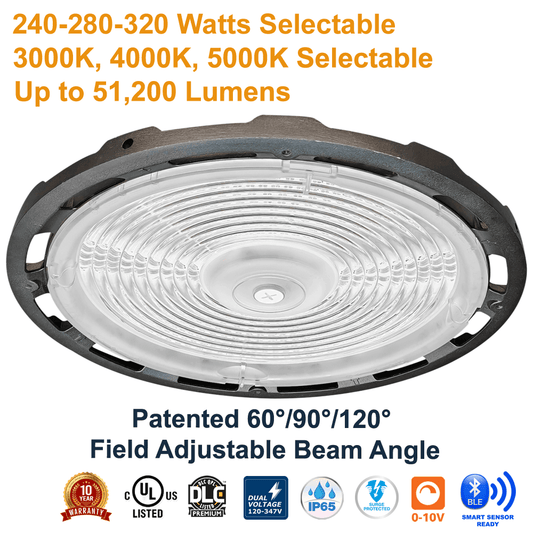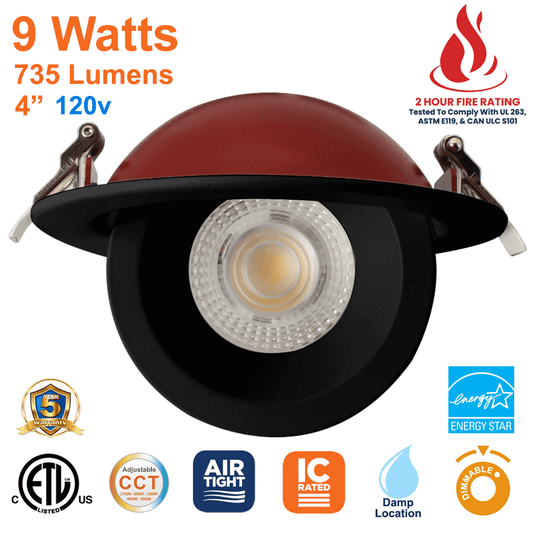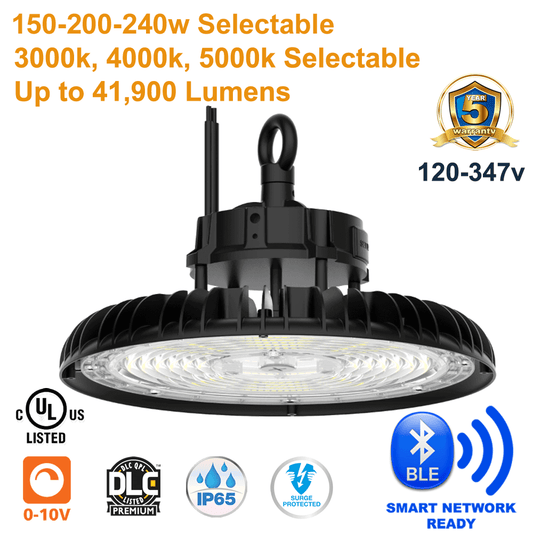LED lighting has become the new standard in residential and commercial lighting due to the numerous benefits over traditional lighting options. One of the most critical components of an LED light is the LED driver. But what exactly does an LED driver do? Let’s look into the world of LED drivers, and what they are, how they work, and more.
LED Drivers 101: Let's Get Back To Basics
To grasp the concept of LED drivers, it's essential to start with the basics. Simply put, an LED driver is an electrical device which regulate the power supplied to an LED chip or a string of LED chips. The driver works to ensure the LED operates within its specified range of power, while maintaining the constant current essential for the LED to function optimally.
How do LED Drivers Work?
To understand how a driver works, it's essential to know the basics of LED lights. An LED is a semiconductor device which emits light when a current passes through it. LEDs have a low operating voltage of around 2-3 volts, so they need a driver to regulate the voltage and current being supplied.
LED Chips operate on DC (Direct Current) voltage. The LED driver converts incoming AC (Alternating Current) voltage to DC. The driver then continually regulates the voltage and current, ensuring that the LED operates within its specified range of power. Without the driver, an LED would burn out due to excessive current or voltage.
Other Functions Of LED Drivers
While converting and regulating voltage and current, a driver offers several other functions as well. These include:
- Increased Lifespan: LED drivers help to extend the lifespan of LED lights by regulating the power supplied to them.
- Energy Efficiency: LED drivers regulate the power and reduce waste, leading to increased energy efficiency.
- Dimming Capabilities: LED drivers can be used to create dimming effects, which can be useful in a wide range of applications.
- Safety: LED drivers ensure that LED lights operate safely by preventing overloading and other potential hazards.

LED Drivers vs. Fluorescent Ballasts: What's The Difference?
LED drivers and fluorescent ballasts both regulate the power supplied to their respective light sources. However, there are some key differences between the two:
An LED driver is a power supply that regulates the voltage and current supplied to an LED light. LED lights are sensitive to voltage and current, and if these are not regulated, the LED may burn out prematurely, or fail to function properly. LED drivers also work to protect the LED from over-voltage, over-current, and thermal issues, prolonging the working live of the LED.
On the other hand, a fluorescent ballast works to regulate the current being supplied to a fluorescent lamp. Fluorescent lamps require a high voltage to start, but once they are operating they need a regulated current to maintain a stable light output. The ballast provides this regulated current, limiting it to a safe level to prevent the lamp from burning out. Fluorescent ballasts will help to extend the life of the lamp by reducing operating temperature and protecting the lamp from over-voltage and over-current conditions.
In summary, an LED driver provides and regulates stable DC power to LED lights, while a fluorescent ballast regulates the AC current and voltage used to power fluorescent lamps. LED drivers and fluorescent ballasts serve different purposes.
How Long Do LED Drivers Last?
The lifespan of an LED driver can vary based on various factors but the three key ones are:
- The quality of components.
- The design of the driver.
- The conditions in which it's used.
A good quality LED driver can be expected to operate for tens of thousands of hours. Manufacturers typically provide a warranty for a set period, which can be an indication of the minimum expected lifespan. You should expect a driver with a warranty of 3-5 years to last at least that long under normal operating conditions. For robust industrial LED fixtures, the driver life can be expected to be even longer.
What Causes LED Driver Failure?
Several factors can cause an LED driver to fail, including:
- Overheating: Excessive heat caused by poor ventilation, overloading the driver, or operating the driver at a higher temperature than it's designed for will accelerate the failure point of a driver.
- Voltage or Current Spikes: Power issues such as surges and voltage/current spikes can damage the components of an LED driver, causing it to fail. These instances can be caused by power outages, poor power supply, and various other electrical disturbances including lightning strikes.
- Incompatible Components: Mixing and matching different components can cause an LED driver to fail. If you use an LED driver which is not designed for the specific LED light source you are using, there will be a high likelihood of issues that can ultimately lead to failure.
- Manufacturing Defects: Defects in the manufacturing process can also cause an LED driver to fail prematurely. This can include issues with the soldering or wiring, component placement, or other manufacturing defects.
- Environmental Factors: Exposure to moisture, dust, or other contaminants, that a driver is not designed for, can cause an it to fail over time. This is especially true if the driver is installed in harsh working environments.
Choosing a Quality LED Driver
When looking for a quality LED driver, you should consider the following factors:
- Efficiency: A quality driver is designed to operate at high levels of efficiency. This reduces energy waste and saves money on hydro bills.
- Compatibility: The driver should be compatible with the specific LED light source you are using. It should be designed to work with the voltage and current requirements of the LED light, and the two components should have effective communication.
- Dimming Capabilities: Dimming and dimming through Networked Lighting Controls are becoming increasingly popular LED lighting options. A quality LED driver will work seamlessly with the dimming technology you plan to use.
- Lifespan: The lifespan of an LED driver varies widely depending on the quality of components, design of the driver, and specific use. Look for fixtures and drivers with long lifespan and designed for the application you have in mind. This will maximize their lifespan and reduce the need for future replacements.
- Safety: A high-quality LED driver should be designed with safety in mind. Features, such as surge protection, will lower the chance of failure.
- Certification: Only use LED drivers certified by a recognized safety agency. The three most common safety agencies, used in Canadian lighting, are: UL (Underwriters Laboratories), ETL (Intertek Testing Services), and CSA (Canadian Standards Association). Choosing a driver certified by one of these agencies to ensures it meets Canada’s safety and performance standards.
- Warranty: A high-quality LED driver will typically come with a warranty that covers the driver for a set period. Look for a warranty of at least 3-5 years to ensure that the driver is backed by the manufacturer.
Frequently Asked LED Driver Questions
Q: Can I use any LED driver with any LED light?
A: No, it's essential to ensure that LED drivers are compatible with the specific LED light they are being used with. This helps ensure that the safe and efficient operation.
Q: Can LED drivers be used with other types of lighting?
A : No, LED drivers are designed specifically for use with LED lights and are not suitable for use with other types of lighting.
Q: Do I need an LED driver for every LED light I use?
A: It depends on the specific LED light you are using. Some LED lights have built-in drivers, while others require external drivers. It's important to check the specifications of your LED light to determine whether you need a separate driver.
Conclusion
LED drivers are the crucial component in powering LED lights. They regulate voltage and current so an LED operates within the range of power it has been designed for. This extends the lifespan of the LED and improves its energy efficiency. By understanding the basics of LED drivers, you can look for the right driver for your LED lighting, ensuring a long and safe working life.
At LED Network, we provide robust, commercial grade LED Lighting built for Canada, built to last. Our fixtures are all designed and constructed around quality LED drivers for years of residential, commercial, or industrial performance.























